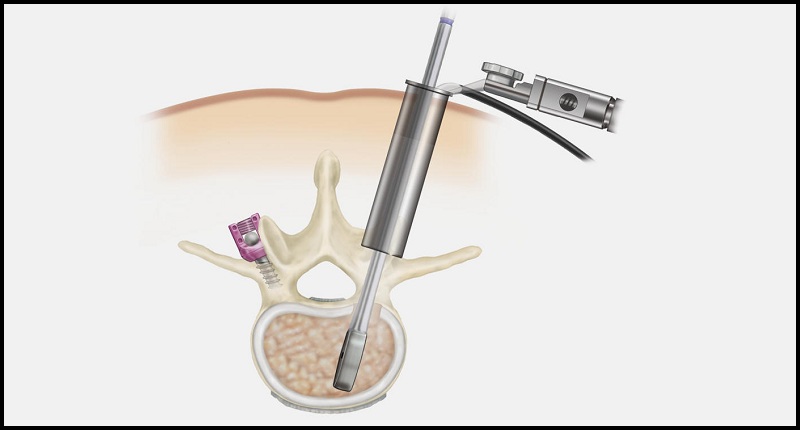
Minimally invasive spine surgery (MISS) is sometimes called less invasive spine surgery. In these procedures, doctors use specialized instruments to access the spine through small incisions.In a traditional, open surgery, the doctor makes an incision that is 5 to 6 in. long and moves the muscles to the side in order to see the spine. With the muscles pulled to the side, the surgeon can access the spine to remove diseased and damaged bone or intevertebral disks. The surgeon can also easily see to place screws, cages, and any bone graft materials necessary to stabilize the spinal bones and promote healing.
One of the major drawbacks of open surgery is that the pulling or "retraction" of the muscle can damage the soft tissue. Although the goal of muscle retraction is to help the surgeon see the problem area, it typically affects more anatomy than the surgeon requires. As a result, there is greater potential for muscle injury, and patients may have pain after surgery that is different from the back pain felt before surgery. This can lead to a lengthier recovery period.
Minimally invasive spine surgery was developed to treat spine problems with less injury to the muscles and other normal structures in the spine. It also helps the surgeon to see only where the problem exists in the spine. Other advantages to MISS include smaller incisions, less bleeding, and shorter stays in the hospital.
Common Minimally Invasive Spine Surgeries
MIS Lumbar Diskectomy :
A herniated disk in the lower back that pinches a nerve may cause severe leg pain, numbness, or weakness. To surgically relieve these symptoms, the disk is removed. This procedure is called a diskectomy.
For the surgery, the patient is positioned face-down and a small incision (sometimes less than 1 in.) is made over the location of the herniated disk. The surgeon inserts the retractor and removes a small amount of the lamina bone. This provides the surgeon with a view of the spinal nerve and the disk. The surgeon carefully retracts the nerve, removes the damaged disk, and replaces it with bone graft material.
This minimally invasive technique can also be used for herniated disks in the neck. The procedure is done through the back of the neck and called an MIS posterior cervical diskectomy.
MIS Lumbar Fusion :
A standard, open lumbar fusion may be performed from the back, through the abdomen, or from the side. Minimally invasive lumbar fusions can be done the same way.A common MISS fusion is the transforaminal lumbar interbody fusion (TLIF) Using this technique, the surgeon approaches the spine a little bit from the side, which reduces how much the spinal nerve must be moved.
In an MIS TLIF, the patient is positioned face-down and the surgeon places one retractor on either side of the spine. This approach prevents disruption of the midline ligaments and bone. Using the two retractors, the surgeon can remove the lamina and the disk, place the bone graft into the disk space, and place screws or rods to provide additional support.
Approaching the spine slightly from the side does not provide the surgeon with a full view and it is often a challenge to remove the disk completely. This may make fusion healing more difficult. Sometimes the surgeon will use additional bone graft besides the patients own bone to improve the likelihood of healing.
Minimally invasive spinal fusion is also commonly performed from the side. There are two procedures that use a side approach: extreme lateral interbody fusion (XLIF) and direct lateral interbody fusion (DLIF). The benefits of these lateral fusion surgeries are that they do not injure the muscles in the back and they do not tug or pull on the nerves in the spinal canal.